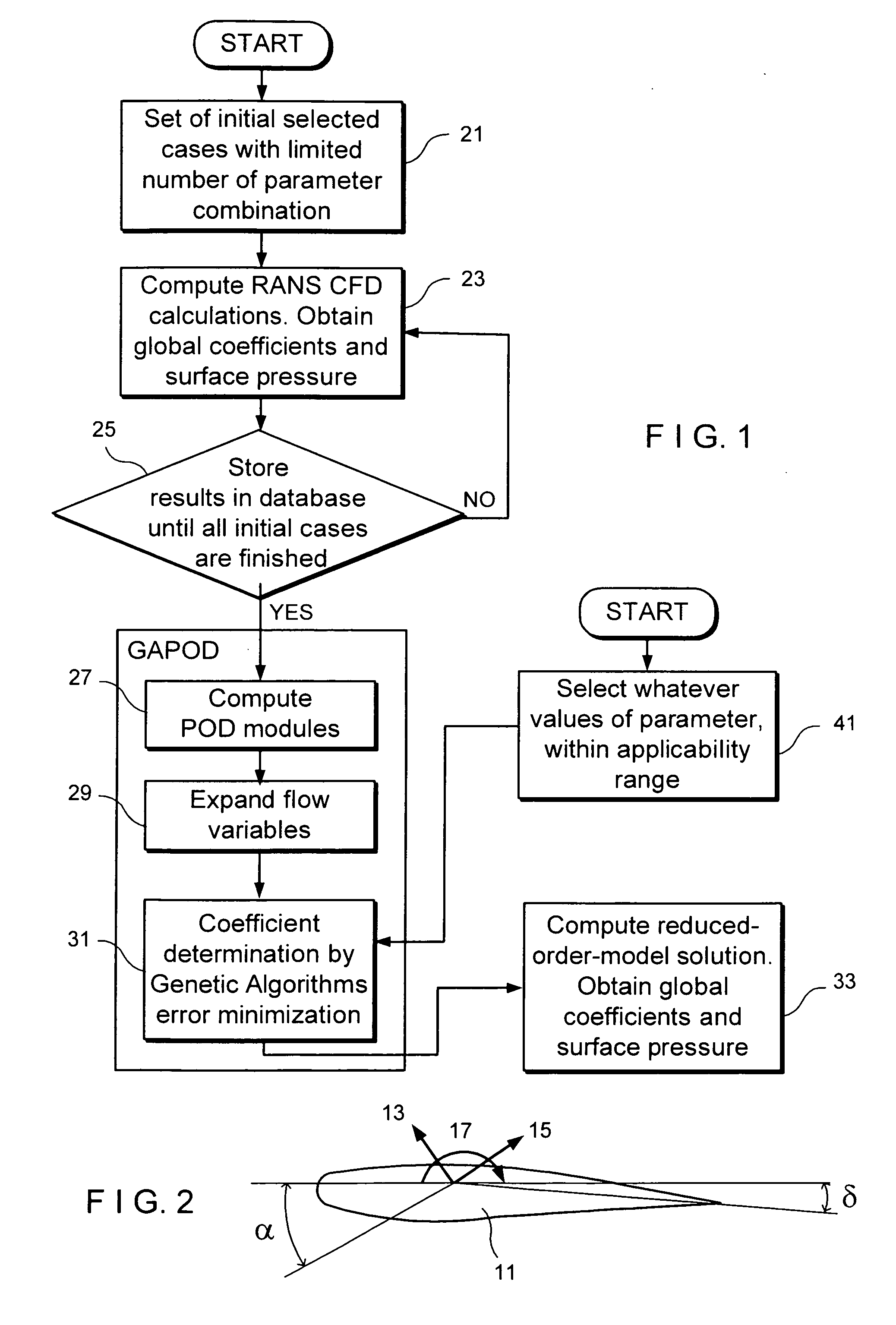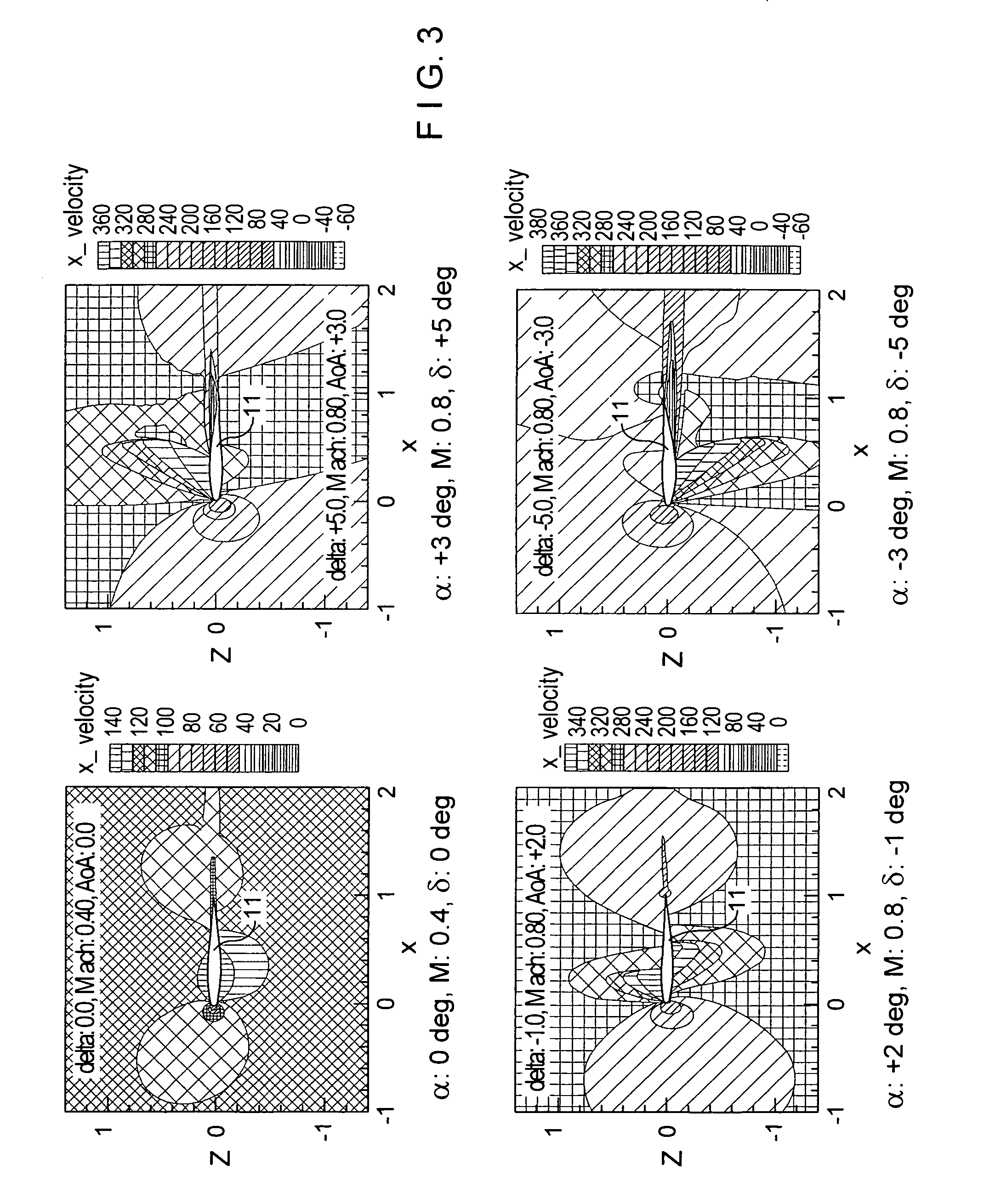Method and system for a quick calculation of aerodynamic forces on an aircraft
a technology for aerodynamic forces and aircraft, applied in the field of methods and systems for quick calculation of aerodynamic forces on aircraft, can solve the problems of reducing the number of snapshots, requiring many long and costly computations, and requiring significant computational resources for each computation, so as to reduce the amount of computation storage and reduce the need for storage information
- Summary
- Abstract
- Description
- Claims
- Application Information
AI Technical Summary
Benefits of technology
Problems solved by technology
Method used
Image
Examples
example 1
1053 Cases Combining the Following Parameter Values
[0035]α (13 values): −3.00, −2.50, −2.00, −1.50, −1.00, −0.50, 0.00, +0.50, +1.00, +1.50, +2.00, +2.50, +3.00
[0036]M (9 values): 0.40, 0.45, 0.50, 0.55, 0.60, 0.65, 0.70, 0.75, 0.80
[0037]δ (9 values): −5.00, −3.00, −2.00, −1.00, 0.00, +1.00, +2.00, +3.00, +5.00
example 2
378 Cases Combining the Following Parameter Values
[0038]α (9 values): −3.00, −2.50, −1.50, −1.00, 0.00, +1.00, +1.50, +2.50, +3.00
[0039]M (6 values): 0.40, 0.55, 0.65, 0.70, 0.75, 0.80
[0040]δ (7 values): −5.00, −3.00, −2.00, 0.00, +2.00, +3.00, +5.00
example 3
100 Cases Combining the Following Parameter Values
[0041]α (5 values): −3.00, −1.50, 0.00, +1.50, +3.00
[0042]M (4 values): 0.40, 0.55, 0.70, 0.80
[0043]δ (5 values): −5.00, −3.00, 0.00, +3.00, +5.00
[0044]In step 23, the lift coefficient 13, the drag coefficient 15, the pitching moment coefficient 17 and the surface pressure on the airfoil 11, for each selected case, are calculated by a Computational Fluid Dynamic software program (CFD RANS).
[0045]As it can be seen in FIG. 3 there are big differences in the flow field nature in the four cases shown with different values of the parameters α, δ and M that impose very different aerodynamic forces in the airfoil 11.
[0046]In step 25 the results of said calculation are stored in a database, not only global force coefficients and pressure distribution but also the whole flow field solution, for the different variables at the discrete mesh points.
[0047]In step 27, using said results, the POD modes of the flow variables: U (velocity in the x-di...
PUM
 Login to View More
Login to View More Abstract
Description
Claims
Application Information
 Login to View More
Login to View More - R&D
- Intellectual Property
- Life Sciences
- Materials
- Tech Scout
- Unparalleled Data Quality
- Higher Quality Content
- 60% Fewer Hallucinations
Browse by: Latest US Patents, China's latest patents, Technical Efficacy Thesaurus, Application Domain, Technology Topic, Popular Technical Reports.
© 2025 PatSnap. All rights reserved.Legal|Privacy policy|Modern Slavery Act Transparency Statement|Sitemap|About US| Contact US: help@patsnap.com



